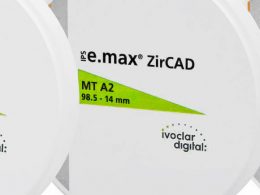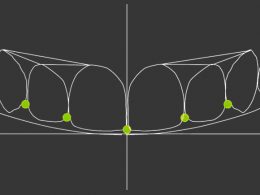Table of Contents
The good appearance or look of the teeth is one of the greatest demands of patients in any type of dental treatment. This aided in the evolution of aesthetic restorations, including the use of resin-based composite materials.
Restorative Dentistry is a very important specialty in contemporary clinical practice. To treat tooth decay, we need to remove the infected tissue and fill the cavity with a suitable dental filling material. One option is the use of direct tooth-colored and light-cured restorative materials.
Composite resin-based restorative material has been one of the most widely accepted restorative materials since the 1970s. Since then, evolution has made it one of the most widely used filling types, particularly in its light-curing version. Due to its proven efficacy and high success rate, composite restorations are being used more and more in the field of Restorative Dentistry.
On the other hand, many countries have recognized the importance of evaluating new technologies applied in dental care. The revision of dental technology is necessary due to the considerable increase in published research on new treatment options, their rapid spread and their inevitable economic impact on the dental practice.
Among the newest materials and procedures, or those that have undergone the greatest change in recent times, we find dental composites, aesthetic posts, ceramics, veneers, computer-aided smile design and the use of CAD/CAM technology.
This publication discusses the advantages and disadvantages of each of these techniques and materials.
Dental Composites
“Composite” refers to a mixture of different materials. Dental composites are tooth-colored filling materials (popularly known as resins) composed of synthetic polymers, particulate reinforcing ceramic fillers, molecules that promote or modify their polymerization reaction and silane coupling agents that bind reinforcement fillings to the polymer matrix.
Each component of the composite has a different function and contributes to the final success of the dental restoration. However, the most significant developments in the evolution of its commercial presentations have been the direct result of the modifications made to its filler components. Fillers are used in dental composites to provide them with strength, greater rigidity, dimensional stability and less shrinkage during their hardening process, better aesthetics and easy handling.
ADVANTAGES Dental composites are aesthetic and relatively inexpensive. The restoration can be completed in one day and also has the “self-sealing” property. Another advantage is that these restorations can be easily repaired, although the need to do so is very rare.
DISADVANTAGES Sometimes, after dental composites are placed, the patient may complain of moderate tooth sensitivity. Another disadvantage is that the application method is very sensitive to moisture. They also cost more than dental amalgam. Dental composites tend to shrink when hardened and can also wear away much faster than tooth enamel.
Aesthetic Posts
The introduction of cosmetic pins or posts has had a major impact on the restoration of endodontically treated teeth. Since its inception, technology has modified and improved the shape and materials of these restorative devices. In addition, the use of innovative adhesive systems and new cementation techniques offers the possibility of achieving a high level of adherence within the root canal, which is decisive for the final success of the treatment.
Until 15 years ago, the restoration of these teeth involved a combination of pre-fabricated or custom-made metal posts and cores. However, the introduction of materials that can truly adhere to dentin has created an alternative option for the reconstruction and rehabilitation of root canals that have been severely damaged by caries, trauma, birth defects or internal resorption; or in those cases where a superior aesthetic result is desired.
The addition of polyethylene fibers to these posts, has been the key to their evolution.
ADVANTAGES Among the advantages of aesthetic posts we find: they offer good retention without the need for extensive preparation of the tooth structure, they consume less time to prepare and are less expensive than cast metal posts that require multiple appointments.
DISADVANTAGES They induce stresses in the dentin in the form of cracks or fissure lines that can increase the potential for micro-fractures or fractures of the treated tooth. They increase the chances of perforation in the root canal or on the external surface of the tooth. Long-term results are unknown.
Ceramic Crowns
Ceramics are replacing metals as the materials of choice in the fabrication of dental crowns, as well as in other types of indirect restorations. Although alumina-based crowns continue to replace metal-based crowns, their high failure rate remains a major clinical problem.
Structural fractures, in both monolithic and layered crowns, are the most common cause of clinical failure. Failure is generally not the result of damage to the occlusal or masticatory surface of restorations, but rather cracks in the luting interface. It has been observed that initially these cracks are limited to the inner layer of the nucleus, but later they propagate eventually causing irreversible failure of the restoration.
ADVANTAGES The major advantage of ceramic crowns is the esthetic result. The thermal conductivity is low for ceramic and also it is resistant to corrosion. Also, there are no galvanic reactions for ceramic. Dental ceramics are claimed to be the most biocompatible materials used to date for dental restorations.
DISADVANTAGES Ceramic crowns are expensive and require a high level of clinical skill. The preparation process is very technique sensitive and requires the removal of a considerable amount of healthy tooth structure. Occasional postoperative pain has been reported due to bonding and cementation techniques. Excessive wear of the opposite tooth can also occur if the ceramic surface is not properly glazed or polished.
CAD/CAM Technology for 100% Metal-Free Restorations
Totally metal-free ceramic crowns can be fabricated using CAD/CAM technology generated copings or cores, which are then manually veneered by the lab technician; or from a monolithic block of the selected ceramic material.
CAD/CAM (computer-aided design/computer-aided manufacturing) systems have evolved over the past two decades and have been used by dental health professionals for more than twenty years. One of the main lines of implementation has been the use of prefabricated ceramic blocks for the confection of dental restorations.
The CAD/CAM systems have been used mostly for the manufacturing of prosthetic fixed restorations; such as inlays, onlays, veneers and crowns.
ADVANTAGES High dental aesthetics because it is a technology that uses state-of-the-art ceramic systems, more conservative treatments that favors the preservation of healthy dental tissue, 100% metal-free fixed crowns and bridges, greater biocompatibility and resistance to dental plaque, precision in adaptation to the abutments with an exact peripheral marginal seal that guarantees their long-term performance, longevity very similar to traditional metal-porcelain prostheses and speed of processing because it is a robotic system that simplifies the laboratory process. Basic clinical and scientific research has shown very positive results on the concept.
DISADVANTAGES The cost of CAD/CAM technology represents a major limitation. Getting familiar with the CAD/CAM concept takes a lot of time and effort, but after repeated use, the operation of the device becomes almost automatic. As with any new technology, it is expensive, but its use involves achieving an extraordinary level of precision and quality.
Porcelain Veneers
Since their introduction in the early 1980s, ceramic veneers have gained wide acceptance as a primary mode of restoration in Cosmetic Dentistry. As aesthetic expectations of patients increase, professional teams are challenged to apply a scientific and systematic approach to achieve natural oral and facial aesthetics with these types of restorations. Advances in ceramic materials and veneering techniques allow Dentists to restore function and aesthetics using conservative and biologically compatible methods, as well as promoting long-term oral health.
Esthetics, treatment planning and clinical care must be considered in relation to the interrelationship between teeth, gingival tissues, lips and face. It should also be taken into account how the patient’s facial and psychological parameters can influence the design of a natural smile. Since ceramic veneers are indicated mainly for the improvement of dental aesthetics, the design of the smile must respect the symmetry and harmonic arrangement of the dento-facial elements.
The patient is often the supreme judge of restorations in an aesthetically oriented treatment. If the Dentist and patient do not have the same results in mind, there is a possibility that he will not approve the final restorations. For these reasons, it is important to accurately visualize veneers prior to fabrication.
ADVANTAGES Some of the advantages of porcelain veneers are: they look extremely natural, because porcelain and tooth enamel are white and translucent, so they react to light in a similar way. Light enters both elements and reflects off the surface below them. They are also stain resistant and very durable.
DISADVANTAGES While porcelain veneers are an excellent option for most people, there are some disadvantages to be aware of: porcelain veneers have the potential to break, their application is not a reversible process, they are more expensive than composite resin dental veneers, and in some cases, increase the sensitivity of the teeth.
However, for the vast majority of people, the cosmetic benefits of porcelain veneers, far outweigh any negative aspects of the procedure.
Smile and Self-Esteem
When commenting on technology and aesthetics of the smile, at DENTAL VIP we can conclude that in recent years it has been recognized, both by professionals and the general public, that having an unsightly set of teeth is not just a matter of vanity. If a person does not trust his smile, his behavior and degree of self-confidence can be affected. Cosmetic Dentistry has a large number of techniques and materials that, applied correctly, can have a very positive impact on people’s self-esteem.
Even so, we also recommend that before undertaking any aesthetic treatment, a thorough understanding and comprehension of the desired procedure and its long-term implications be had.
“The Times Have Changed. Currently, New Dental Ceramics and Digital Technology, Make Smile Design a Very Advanced and Predictable Procedure”.
DENTAL TIP
There is no doubt that the technology of the 21st century enables dental professionals to be more than the guardians of oral health. Whether patients are looking for a small change or a complete smile makeover, current equipment and techniques can help meet the goal, as long as the staff is well trained and has sufficient expertise in the specialty.
Take Care of Your Health by Saving Money!
DENTAL VIP has years of experience in helping patients get the best possible treatment at the best possible price, by travelling to Venezuela for their dental makeover. Whether you wish to rule out any oral injury, have a biopsy, undergo maxillofacial surgery or rehabilitate your entire mouth, it is amazing how much can be done in a short space of time with the right dental team and technology.
If you have never travelled to Caracas before we can quite literally organize your whole dental trip. From your initial quotation, sourcing your flight tickets and hotel along with getting you to DENTAL VIP to undergo your treatment and back to your hotel again. It is our job to make this easy for you, just as we already have for hundreds of patients across the globe.
Being the largest facilitator of dental treatment in Venezuela, we are known in the industry for our quick and professional response. Get in touch today via WhatsApp +58 414-9033547, social networks or Email to find out how we can help you regain your health and achieve the confident smile you have always wanted.












